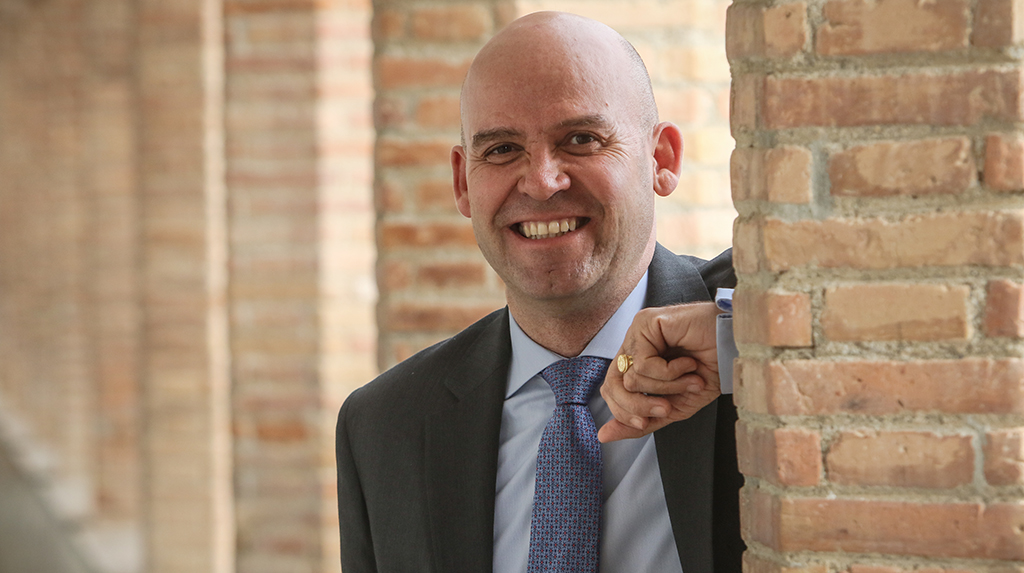Because, understanding what motivates us, what properly captures and explains the full range of such motivations, is essential in making good personal decisions and managing people in organisations. In his book recently published “Motivation in Organisations:
Searching for a Meaningful Work-Life Balance”, Manuel Guillén, Director of the IECO, in a very personal and engaging style, presents a “map of motivations”, based on a humanistic approach to management with specific ways of putting the framework into practice.
Why this book of motivation and meaningful work? What has led you to write it?
I decided to write this book because our teaching of human motivation has been quite un-human, If I can put it so boldly, for the last several decades. We have presented to our students an almost completely selfish, materialistic and non-transcendent vision of the human being. And that has fostered an equally dehumanized and negative conception of the meaning of work, which we have helped transmit.
So, I wrote this book because for years I thought I was giving my students the wrong education, and I wanted to correct my own mistakes. For years I did not know how to do it better. I hope that the book will help other concerned teachers correct this and similar mistakes as well as highlight the inadequacies and limitations of the dominant theories.
How was the process of writing such an inspirational and motivational book? Did you find it difficult to express all those feelings?
Although I have written the book during my last two years in the United States, it is the result of many years of study and research and constant discussion with my students in the classroom. I have always encouraged my students to think critically, challenge their assumptions, and it has been their questions, problems, and suggestions that have shaped the book into the way it is finally written.
I think it has been easy to convey my feelings because I have written the book the same way I teach. Above all, I have tried to be honest with the reader at all times, and I hope that aspect will come across clearly.
It is striking that the book opens querying whether the theories of human motivation are really human. In what sense could they not be at all?
I think the theories of motivation that we teach are not human mainly because they are so “academic” that they do not pay adequate attention to the concept of human love, and love is the first human motivation. We are all driven by the desire for good, and that is love. We are motivated when we love what we do, in life and at work. This is one of the main theses of the book, and possibly the most important one.
Therefore, a theory of motivation must stop to think about what are the goods that we love, that move us to act, that give meaning to what we do. A theory of human motivation -if it is to be authentically human- must begin by reflecting on what are the human goods that we all pursue in one way or another.
How did you come up with the idea of organising people’s motivation in a map? It reminded me to Plato’s Theory of Ideas, to that ontological dualism he created.
The idea of the map came to me while I was writing the book. I realized that a map tells you all the possible places you can go (all the possible motivations) but in the end you are the one who freely decides where you want to go (what motivates you to act in each specific case).
I think the map analogy helps a lot to understand where we are, what our motivations are in life and work, and where we want to go. In other words, what we would like to motivate us in the future. In the end, being motivated is about choosing the good we want, and pursuing it. From there came the reflection about the “coordinates” to interpret the map, the need to have a “compass” to use it and the importance to think about our own “road map” in our life and work.
In a society where the debate about the conciliation between life and work is so booming, what key elements or challenges do you suggest in your book in order to reach a harmony between these two fundamental aspects in everyone’s lives?
Firstly, the map of motivations reflects that this balance between life and work is a complicated issue, which affects us all, and which reflects the tension that exists between different human goods. Hence the importance of reflecting on the hierarchy of those goods, and having criteria to be able to choose in each particular case. Secondly, the book emphasizes that this balance between life and work can be influenced by external circumstances (the organization, the boss, the work itself…), but at the end of the day it is us, and no one else, who decide our own motivations. Unfortunately, we live in a society where we are all very much affected by what others think of us. The harmony between life and work requires us to stop and meditate frequently about the goods that we value most, that we are not willing to sacrifice.
Have you implemented all the ideas and hierarchies narrated in the book to your professional and personal life?
Initially, my purpose was to teach theories of motivation that were more humane, realistic, and practical. However, as the map of motivations emerged, I realized that this research was helping me to understand my own motivations much more clearly. As I began to use the map as a self-diagnostic tool, now it helps me to examine my motivations at work and in life, and to rectify the course whenever I find less reliable, less ordered or less elevated motivations in my own behavior. Without a doubt, writing this book has done me a lot of good on a personal level, and I hope that it will help many people have the same experience.
To know more about the map on motivations and meaningful work, DOWNLOAD THE BOOK SUMMARY HERE



